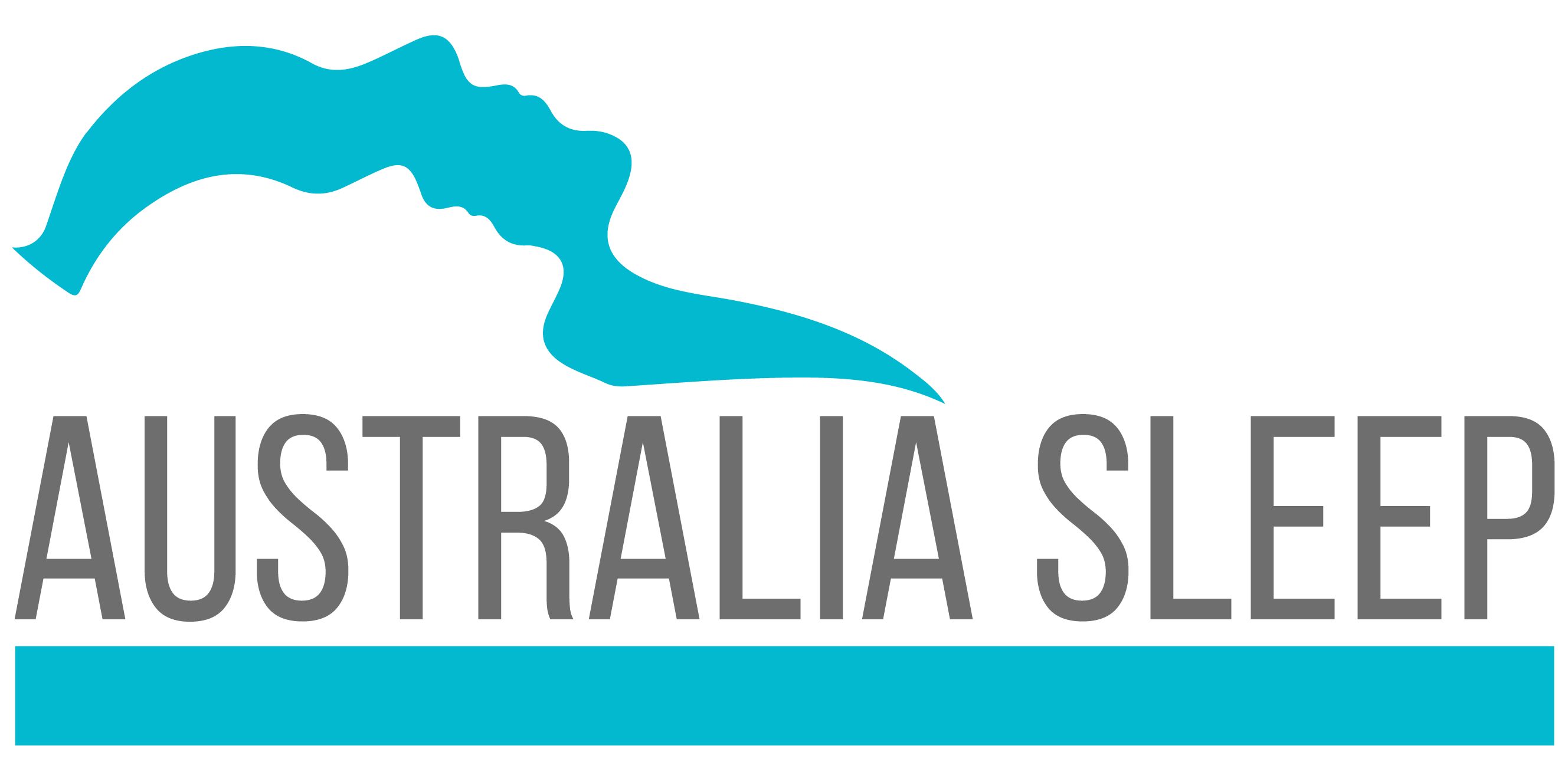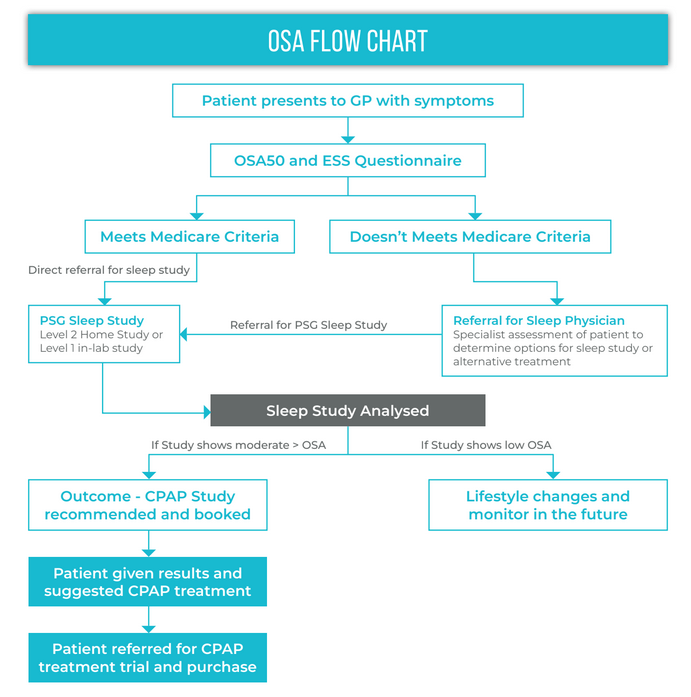How is sleep apnea diagnosed?
A doctor may recommend an overnight sleep study in hospital or a home-based test to diagnose sleep apnea. During the sleep study, sensors are placed on the person’s body to monitor their breathing patterns as well as heart rate, respiration, oxygen levels and brain activity while they sleep.

The pathway to a sleep apnea diagnosis
It’s possible that your partner has complained about your snoring, or maybe you’ve decided it’s time to deal with ongoing daytime fatigue. No matter your motivation, if you suspect you might have sleep apnea, the next step is to get a proper diagnosis. Here’s how:
Visit your doctor
Your primary care doctor can look at your symptoms and
guide you to an appointment with a sleep specialist if you
think you may have sleep apnea and need more help and a
diagnosis.
Screening questionnaires - OSA50 and ESS
There are two screening questionnaires commonly used to
assess the likelihood of having sleep apnea. These are the
Epworth Sleepiness Scale (ESS) and the OSA50. If your doctor
believes you may have sleep apnea, they may ask you to
complete one or both of these questionnaires.
Medicare criteria requirements and the next step
Your results on the initial screening tests will determine the
next stage for you. If results don’t satisfy current Medicare
Criteria, your GP might still request further assessment and
refer you to a specialist sleep physician. Should the results
meet Medicare criteria, you’ll be given a direct referral for a
sleep study.
PSG Sleep study
A Polysomnography (PSG) is better known as a sleep study
and is a comprehensive test used to diagnose sleep apnea
and other sleep disorders. The Gold Standard in testing is a
Level 1 in-hospital study or Level 2 at-home study. It will be
decided between your doctor and yourself which test is best
suited. During testing, monitoring equipment attached to
your body measures breathing, oxygen levels, heart rate and
brain activity, among other things.
Review of Results
Once the PSG procedure is complete, results will be reviewed
by a specialist who can then give an accurate diagnosis and
recommend treatment.
If the PSG shows mild OSA
Should you be experiencing mild OSA, your doctor will most likely suggest lifestyle
changes and recommend future monitoring.
When the PSG shows moderate and severe OSA
If the PSG shows moderate or severe OSA, a CPAP Study will be recommended
and booked for you. This study will determine what CPAP therapy will be initially
suggested for you. From there, you’ll be referred for CPAP treatment and then to
trial and purchase CPAP equipment.
Terms explained
OSA – Obstructive Sleep Apnea
CPAP – Continuous Positive Airway Pressure
PSG – Polysomnography (Sleep Study)
ESS – Epworth Sleepiness Scale
OSA50 – Obstructive Sleep Apnea Severity Index questionnaire




